|
|
|||
|
(Back to Preceding Week; on to Next Week) |
|
Blue-throated
|
A few spaces are still available for our 2010 midwinter HUMMINGBIRD |
Canivet's
|
|
WHEN WINTER GIVES YOU FRIGID WEATHER, TAKE PICTURES OF ICE
"One good thing about living in the Carolina Piedmont is that it never gets really cold here in winter." If you can utter such a phrase with a straight face you must be a die-hard member of some local tourism commission, and you would quickly have to retract your statement after looking at temperature readings for the first half of January 2010. Here at Hilton Pond Center--and despite a super-efficient wood stove cranked wide open--our teeth have been chattering and our feet have been colder than a brass monkey, all because the jet stream dipped so far south it's brought arctic air reminiscent of bitterly cold winters we survived during grad school days in Minnesota. It's just NOT supposed to be like this in sunny South Carolina, but rather than sit around and complain about subfreezing cold we took heed from that old maxim: "When life gives you lemons, make lemonade." In this case we reworded the advice to be: "When winter gives you frigid weather, take pictures of ice"--which is just what we did. The photos that follow are evidence it's ALMOST never too cold to get out and explore nature with camera in hand. All text, charts & photos © Hilton Pond Center Click on chart above to open a larger version in a new browser window We have considerable evidence it's been really cold at Hilton Pond Center. For one, as we awoke each morning and warily extended our toes from beneath warm bed covers to sample the temperature of bedroom air in the Center's old farmhouse, we glanced at the outdoor digital thermometer. Most days the bone-chilling readings made us want to retract our toes and go back to sleep until winter had passed. As shown on the chart above, afternoon HIGHS (red line) weren't all that bad for January in the Carolina Piedmont, but the LOW temps (blue line) were brutal. Not once between the 1st and 15th of January did the overnight low get above 30º, and except for the 1st and the 12th the mercury never even topped 20º. The two coldest days of the period (3rd and 11th) had pre-dawn readings of just 12º, and on 7 January the 16º mark actually tied that date's official low for York SC set in 1988. As noted by the green line on the chart, we got quite close to record lows on several other days, but there's a BIG difference between how one would feel at, say, 3º versus 12º on 11 January. Nonetheless, we can think of only one word to describe what the chart reveals and our extremities verified: Brrrrr!
All text, charts & photos © Hilton Pond Center Our second piece of irrefutable evidence we were experiencing frigid outdoor temperatures in January came each morning after we emerged from the warm comfort of our bedding. Every day since 2009 departed we've gotten up and looked out the back window to see a sheet of ice on Hilton Pond (above)--a sure sign it was truly cold outside. After shivering for a week or so, we decided to find out just how icy the pond really was, so on 11 January we donned the warmest clothes we could find and sallied forth in frigid post-dawn air. Using our trusty cordless DeWalt impact driver with 3/4" paddle bit we were able to drill several holes through the ice, insert a carpenter's rule, and determine the thickness of the ice sheet on the SHADY side of the pond was between 2" and 2.25". (In winter, the pond's south rim--the location of the pier and moored raft in the photo just above--is shaded by tall trees until late afternoon and would be expected to have the thickest ice.) During the past two weeks of very cold nights, the afternoon high was still at least a little above the freezing mark--meaning there was always some thawing on the pond's sunny north margin; in fact, most days by sunset there was at least a little open water on the northern rim. Anytime an adult male human sees an icy pond he immediately reverts to childhood and wants to run out and slide on the slick surface, but knowing there was melt going on we were hesitant and decided such a foray might not be worth it. Instead we trudged back into the house and looked up "Ice Safety" on the Internet.
All text, charts & photos © Hilton Pond Center The first site we came to was that by our old friends at Minnesota's Department of Natural Resources, which we're sure (ya, you betcha) gets lots of questions about the masochistic sport of winter ice fishing (see chart above). According to Minnesota DNR--and those folks should know--only when ice thickness has reached the 4" mark is it safe to drill a hole and attempt to get a half-frozen walleye or muskie to bite. Remember that ice thicknesses in the chart are merely guidelines for new, clear, solid ice. Many factors other than thickness can cause ice to be unsafe. In the words of Minnesota DNR: "There is no such thing as 100 percent safe ice. You can’t judge the strength of ice just by its appearance, age, thickness, temperature, or whether or not the ice is covered with snow. Strength is based on all these factors--plus the depth of water under the ice, size of the water body, water chemistry and currents, the distribution of the load on the ice, and local climatic conditions." In other words, as much as we wanted to walk out on Hilton Pond to take photos of what looked like solid surface, two-inch-thick ice simply wasn't sufficient for us to take the chance. We know what it means "to walk on thin ice," and we're glad we didn't try. Splash! All text, charts & photos © Hilton Pond Center Click on photo above to open a larger version in a new browser window We did, however, venture out onto the pier that juts into Hilton Pond, and from there we spotted something quite interesting. About ten feet from one of the dock pilings were a bunch or air bubbles caught in the ice. Covering an area about 30 inches in diameter, they were the only bubbles we could see from our vantage point. We're not sure what might have caused them, but perhaps something on the pond bottom died and was slowly releasing methane as it decomposed. To us, the photo above of the frozen bubbles looks like some sort of abstract painting.
All text, charts & photos © Hilton Pond Center A closer view of the bubbles in the lower right corner of the photo reveals something else we found quite fascinating: What looks like two columns of increasingly smaller "air disks" stacked on top of each other. We speculate what happened for each was that on successive days an air bubble under the ice became warmed by afternoon sun, allowing it to slowly melt its way upward. At day's end as temperatures dropped, the bubble again became encased in ice before working its way further upward the next day as solar rays warmed the captured air. If the cold snap and slightly warmer afternoons continue for a few more days these captive bubbles might eventually melt their way to freedom. Bloop!
All text, charts & photos © Hilton Pond Center The third way we knew January was a lot colder than usual was by looking at birds at our feeders at Hilton Pond Center. There were the usual House Finches chowing down on sunflower seeds and White-throated Sparrows and Dark-eyed Juncos rifling through millet and cracked corn on the ground, but on several days inside one of our traps baited with sunflower was a . . . Pine Warbler? Yes, the Pine Warbler (PIWA, above), a species one would think--based on bill shape and taxonomic relationships--would most likely be an insect-eater. It is, but in cold weather when big, juicy invertebrates are hard to come by, overwintering Pine Warblers resort to opportunism and gobble up whatever nutrition they can. It's true their bills aren't adapted for cracking sunflower seed shells, but finch flocks leave behind enough tiny seed bits that Pine Warblers can make a living on leftovers. The warblers also have been competing with Downy and Red-bellied Woodpeckers at several extra suet blocks we hung out when the weather got really cold.
All text & photos © Hilton Pond Center Last month we trapped three Pine Warblers in sunflower-baited traps and this week one more, so our winter population seems to be pretty healthy. One PIWA from December was quite pale (previous photo), while the one this week was far more yellow (just above). Despite such great variation in color, both were subadult birds that must have hatched in 2009; we suspect the brighter one is a male, the paler a female.
All text, charts & photos © Hilton Pond Center The fourth way we can confirm things are pretty cold at Hilton Pond Center is to look for signs of the effects of low temperatures on vegetation. The Sweetgum ball (above) was a no-brainer; that it was in the pond but sitting on top of ice rather than floating in water meant it was cold enough for Hilton Pond to freeze over.
All text, charts & photos © Hilton Pond Center Along the pond margin exposed vegetation also provided evidence for the cold, as with dead stalks (above) of a tall wildflower. Instead of blossoms with colorful petals, the plant now bore frozen flowers--delicate star-shaped clusters of ice crystals all along the stems.
All text, charts & photos © Hilton Pond Center Fallen branches of trees and shrubs were also adorned with the frozen deposits that in macro view (above) were seen to be long, needle-like crystals of ice. We had to hold our breath when taking close-up photos of these structures lest they melt. They were also quite delicate to the touch, and many shattered when we bumped the branch with our tripod. Tinkle.
All text, charts & photos © Hilton Pond Center Indeed, frozen crystals formed on all sorts of plant matter around the margin of Hilton Pond, but we had to work hard to find ice on the now-brown leaves of Bald Cypress (above). Crystals have to have some place to start--a droplet of water, speck of dust, or similar substrate--so it may be dead Bald Cypress needles don't have the proper structure.
All text, charts & photos © Hilton Pond Center Some live plants--such as strawberries and Periwinkle, Vinca major (above) growing on the banks of Hilton Pond--appear to exude small droplets of water from their leaf margins. These droplets quickly freeze and are ideal seeds for larger ice crystals that form in very cold weather.
All text, charts & photos © Hilton Pond Center When we scanned Hilton Pond we could see its icy surface wasn't at all smooth. At one point where round-stemmed rushes emerged there were many angular formations (above). Since these lines occurred nowhere else on the pond, we figure they somehow were influenced by the vegetation; we're not sure how. As we took the photo above we heard the nearly indescribable groaning sound of ice shifting--reinforcement that our decision NOT to walk across the pond was a wise one. Shudder!
All text, charts & photos © Hilton Pond Center When our fingers finally got too stiff to press the buttons on our camera, we decided we had enough images of icy wonders at Hilton Pond Center. We might have guessed that on the way back to our warm office we'd come upon a scene we couldn't ignore and that required us to endure the bitter cold a little longer. It provided the fifth and final proof we've been suffering from very cold weather. In an open area of bare earth exposed by last month's torrential rains, millions of tiny ice columns were jutting skyward (above). This phenomenon--called "frost heave"--occurs when ground moisture freezes to form long protruding ribbons or needles of ice. Invariably, small bits of soil are heaved upward as crystals form--a very important way nature loosens and aerates the earth. This disrupted soil becomes a perfect place for seed germination in early spring after winter cold abates--so long as some human doesn't come along and flatten the ice with heavy boots. Crunch! Shortly before the sun went down on 15 January, we recorded a yearly high of 60 degrees--a sign, we hope, the supercooled nights of early 2010 are behind us. Yes, it was indeed cooler than just chilly at Hilton Pond Center these past two weeks, but we're glad we took our own advice in meeting cold weather head-on by going out to take photos.We hope you enjoy what we found in a fascinating icy world wrought by unusually frigid temperatures in the Carolina Piedmont. All text, charts & photos © Hilton Pond Center
Comments or questions about this week's installment?
Thanks to the following fine folks for recent gifts in support of Hilton Pond Center for Piedmont Natural History and/or Operation RubyThroat: The Hummingbird Project. Your tax-deductible contributions allow us to continue writing, photographing, and sharing "This Week at Hilton Pond." (Please see Support if you'd like to make a gift of your own. You can also contribute by ordering an Operation RubyThroat T-shirt.)
"This Week at Hilton Pond" is written & photographed You may wish to consult our Index of all nature topics covered since February 2000. You can also use our on-line Hilton Pond Search Engine at the bottom of this page. For a free, non-fattening, on-line subscription to |
|
Make direct donations on-line via
Network for Good: |
|
|
Use your PayPal account
to make direct donations: |
|
|
If you like to shop on-line, you please become a member of iGive, through which more than 750 on-line stores from Barnes & Noble to Lands' End will donate a percentage of your purchase price in support of Hilton Pond Center and Operation RubyThroat. For every new member who signs up and makes an on-line purchase iGive will donate an ADDITIONAL $5 to the Center. Please sign up by going to the iGive Web site; more than 200 members have signed up to help. It's a painless, important way for YOU to support our on-going work in conservation, education, and research. |
|
|
SPECIES BANDED THIS WEEK: WEEKLY BANDING TOTAL 7 species 24 individuals 2010 BANDING TOTAL 7 species (29-yr avg = 66.7) 24 individuals (29-yr avg = 1,851) 29-YEAR BANDING GRAND TOTAL (since 28 June 1982, during which time 170 species have been observed on or over the property) 124 species 53,666 individuals NOTABLE RECAPTURES THIS WEEK (with original banding date, sex, and current age) Chipping Sparrow (1) 01/01/09--after 2nd year unknown White-throated Sparrow (1) House Finch (1) Tufted Titmouse (1) VAGRANT HUMMINGBIRDS THIS WEEK NONE THIS WEEK
|
OTHER NATURE NOTES OF INTEREST --It's interesting we have a good asemblage of House Finches this winter but NO Pine Siskins yet, and only a few American Goldfinches. In the winter of 2008-09 we banded 384 AMGO and 224 PISI, although all but one of the latter arrived after 1 January. Dark-eyed Juncos and White-throated Soarrows remain scare this season at Hilton Pond Center. All text & photos © Hilton Pond Center  Operation RubyThroat has teamed with EarthTrek so citizen scientists--like YOU--can contribute observations about hummingbird migration and nesting behavior. Membership is free for this great new opportunity to help increase scientific understanding of Ruby-throated Hummingbirds. On-line data entry forms are now live, so please register today at EarthTrek. NOW is the time to report your RTHU fall departure dates from the U.S. & Canada, and fall arrival dates for Mexico & Central America. Please participate.
|
|
(Back to Preceding Week; on to Next Week) Up to Top of Page Back to This Week at Hilton Pond Center Current Weather Conditions at Hilton Pond Center |
 You can also post questions for The Piedmont Naturalist |
Join the |
Search Engine for |
|
|
Twinlab

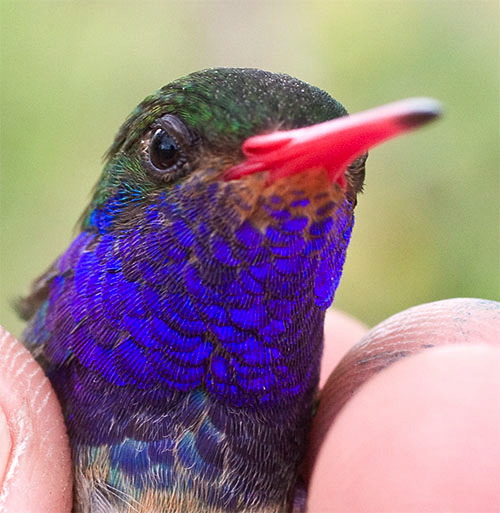
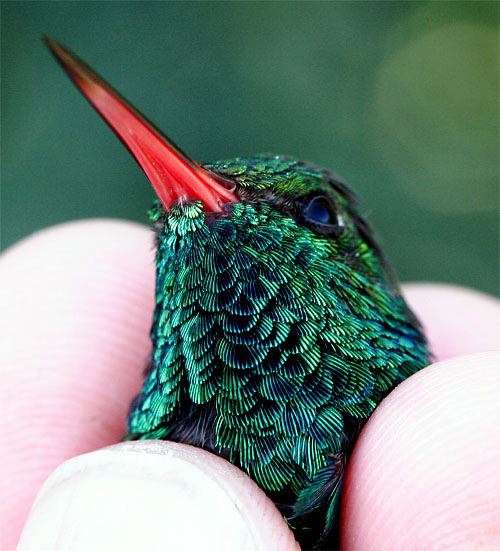



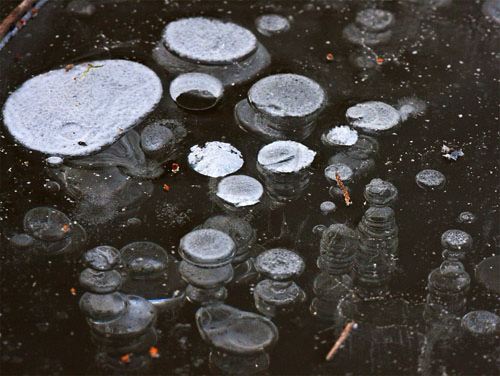
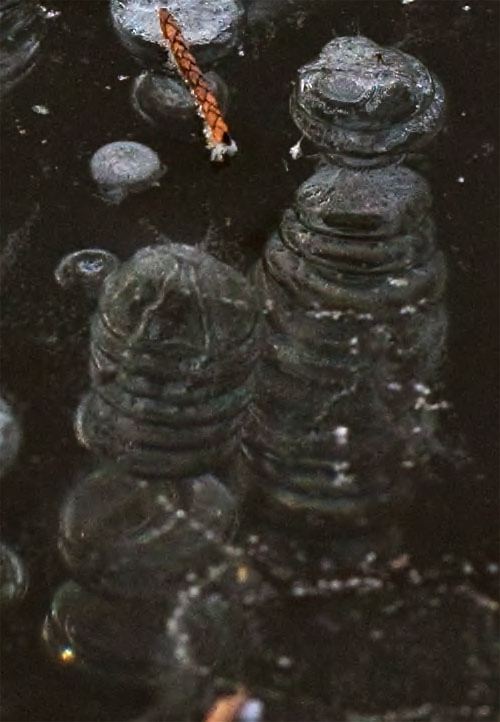

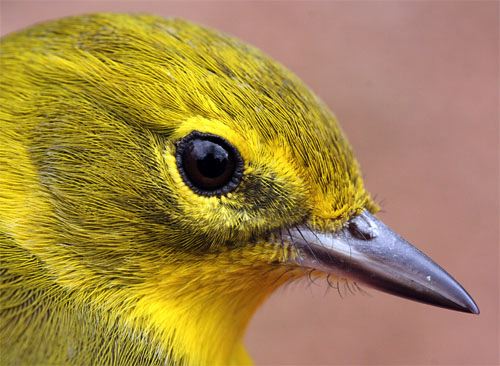
 One other avian sign of cold weather was a lone Purple Finch (PUFI, right) that finally appeared at Hilton Pond Center on 11 January. With intense raspberry plumage, this bird has to be an after-second-year male that hatched at least in 2008; all PUFI start out brown and it takes males two full years to get a full complement of red feathers. So far the individual in the photo is the only PUFI on the property this winter--quite a change from last year when we banded 166. It's not too late for more Purple Finches to show up, however; they're facultative migrants that often come south only when food is scare on breeding grounds up north. Perhaps widespread snow in New England and southern Canada will drive more PUFI our way sometime soon. Chirp!
One other avian sign of cold weather was a lone Purple Finch (PUFI, right) that finally appeared at Hilton Pond Center on 11 January. With intense raspberry plumage, this bird has to be an after-second-year male that hatched at least in 2008; all PUFI start out brown and it takes males two full years to get a full complement of red feathers. So far the individual in the photo is the only PUFI on the property this winter--quite a change from last year when we banded 166. It's not too late for more Purple Finches to show up, however; they're facultative migrants that often come south only when food is scare on breeding grounds up north. Perhaps widespread snow in New England and southern Canada will drive more PUFI our way sometime soon. Chirp!
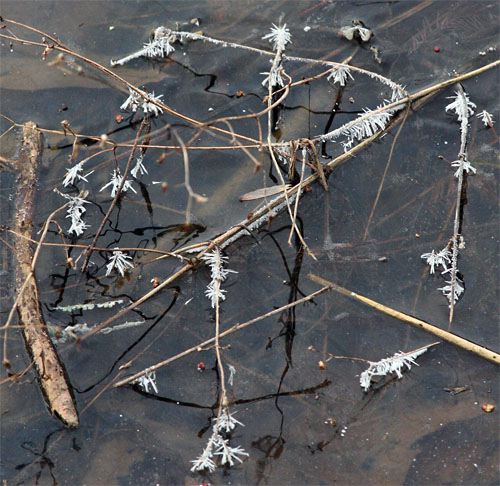
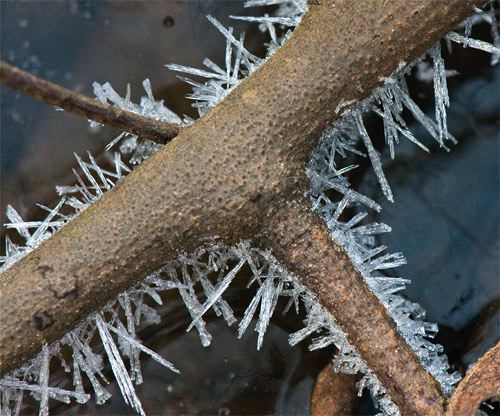
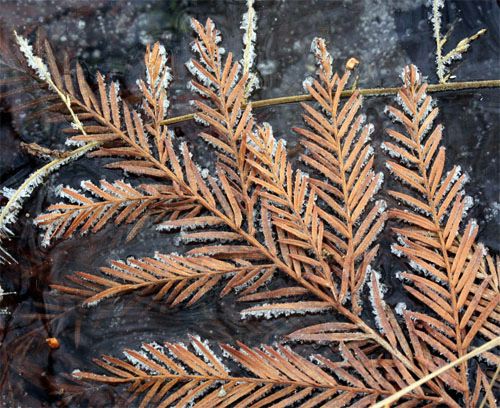
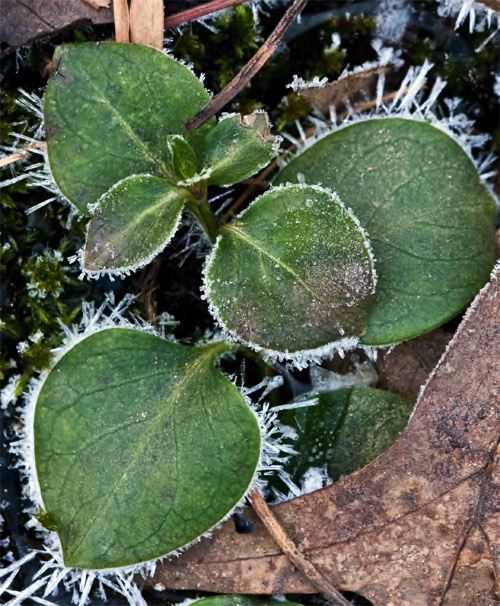
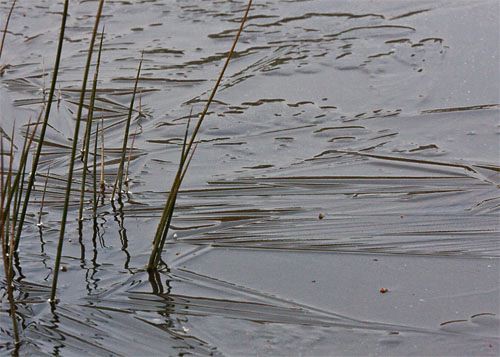



 Oct 15 to Mar 15:
Oct 15 to Mar 15: